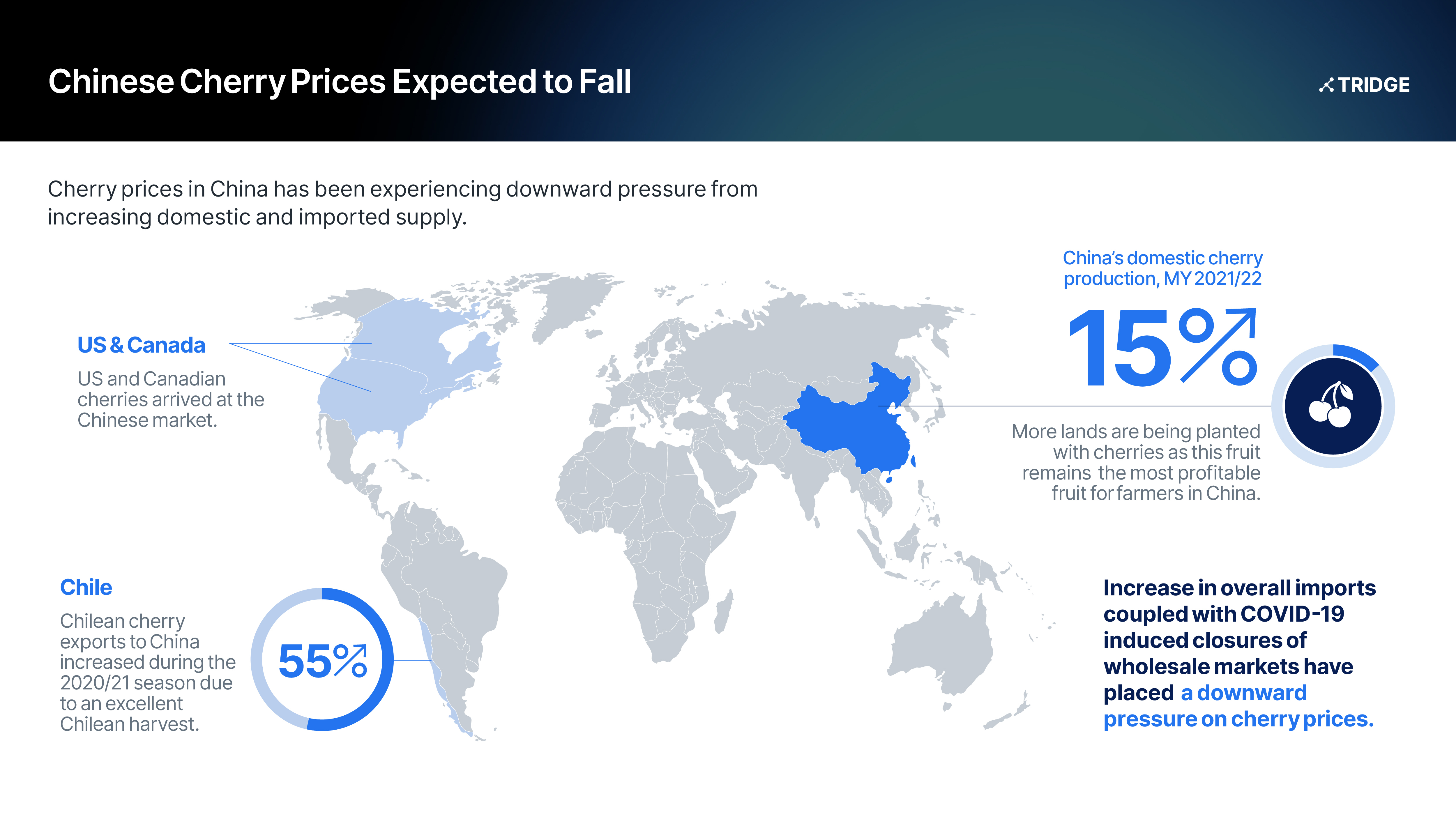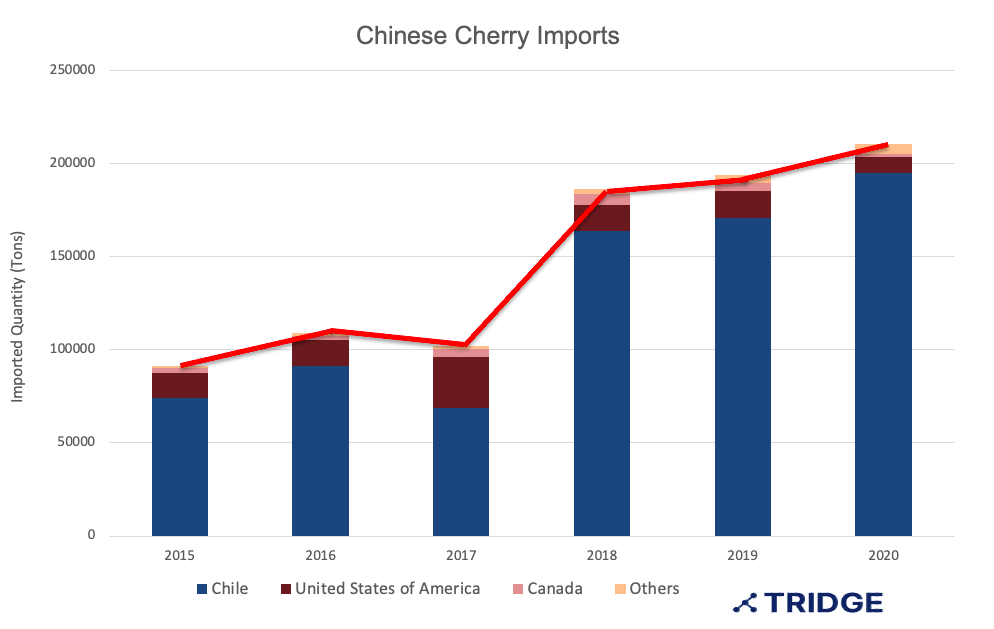Chinese Cherry Prices Expected to Fall

Considerable Increase in Domestic Output
According to a recent U.S Department of Agriculture report, China’s domestic cherry production is estimated to reach 600,000 metric tons in MY 2021/22, which goes from April this year to March next year. The forecasted output represents a 15% increase from the previous season, representing an increase of 79,000 metric tons in production. Additionally, the planted cherry area in China is expected to hit 163,000 hectares in MY 2021/22, which would be a 3% increase from the previous season. The Shandong province, which produces half of the country's cherry output, is expected to continue increasing its production for the next five years as the production area expands.
The main reason for the planted area to keep growing is that cherries remain the most profitable fruit in China for farmers, which has remained like this for the last five years, which has continued to push cherry prices down. For cherry farmers, however, the fruit production remains profitable to the point that Western and Southwest provinces in China have also caught up with extended planted areas that are contributing to the increase. The main reason for the fruit to remain profitable even with lower prices is the continuously increasing demand among Chinese consumers for cherries that has turned the cherry industry into a volume-driven industry.
Boom in Cherry Imports this Season
Although the flavor of Chinese cherries has been improving in recent years due to a greater focus on newer cultivars, there remains a perceived quality gap between China’s domestic cherries and imported ones, especially those from Chile, which supplies over 90% of China’s imported cherries. China is the leading importer of cherries globally and accounts for 42.3% of the global import share. However, according to the USDA report, Chilean cherry exports to China increased by 55% during the 2020/21 season due to an excellent Chilean harvest, which has flooded the market with cherries in the Chinese off-season.

Along with increased Chilean imports, US and Canadian cherries have arrived at the Chinese market around the same time as domestic cherries. According to Tridge’s Engagement Manager in China, Alex Yang, plenty of cherries from the US and Canada are arriving in China by air and sea freight this season. “At present, sales in the Chinese market are mainly at the retail channels, and sales in the wholesale market are not good. As more cherries arrive, wholesale prices are expected to fall further,” he mentioned.
The increase in overall imports this season, the continuous increase in production, and the close of wholesale markets due to COVID-19 restrictions in 2020 have caused cherry prices to hit record lows. Consequently, farmers have had to sell their cherries to local traders at lower prices than last year. For example, at the Yanitay market, Beaty Early cherries are currently being sold for USD 2.50-4.60 per kilogram in the local wholesale market, when the average price was USD 2.25 per kilogram. In addition, the prices of greenhouse cherries also fell due to the increase in production, as in February, when the average price was USD 9.5 per kilo in retail stores.
Next Season Outlook for China
Despite these past years’ challenges, demand for both domestic and imported cherries in China is expected to remain strong. According to the USDA, the per capita consumption of cherries will continue to increase in the foreseeable future as production and cold-storage infrastructure improve. However, due to improved and extended domestic production, imports will gradually decrease. According to the same USDA report, China’s cherry imports for next season are forecast to drop to approximately 300,000 metric tons, decreasing 11% from the previous year. At the same time, imports from Chile are also expected to fall by 11%, mainly due to the 15% increase in production and the gradual decrease of prices in this market.
Chilean cherry prices in China have already fallen by 15% this MY 2020/21 during Chile´s peak export season due to COVID-19 virus detections on the outer packaging. For the MY 2020/21, prices are expected to continue a downfall trend, making Chilean exporters prioritize other international markets. However, the demand among Chinese consumers for cherries is expected to remain strong. With imports from the US expected to increase, cherry prices are expected to continue to fall in the Chinese market.
Sources:
- Fresh Plaza. "Chinese cherry area increased 3% to 163,000 hectares."
- Fresh Plaza. "US cherries arrived on the Chinese market."
- Fruitnet. "Chinese cherry production affects imports."
- Producer Report. "China’s 2021/22 Cherry Imports Forecast To Fall 11%."



